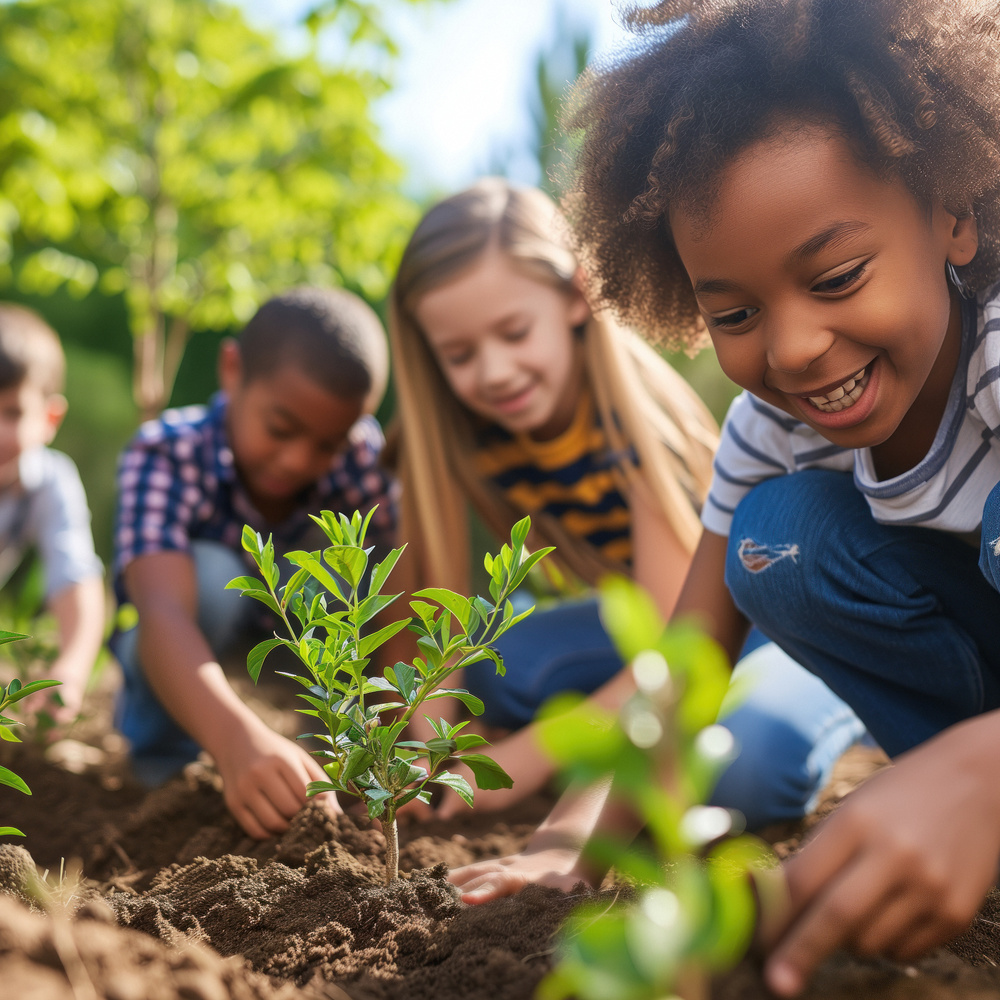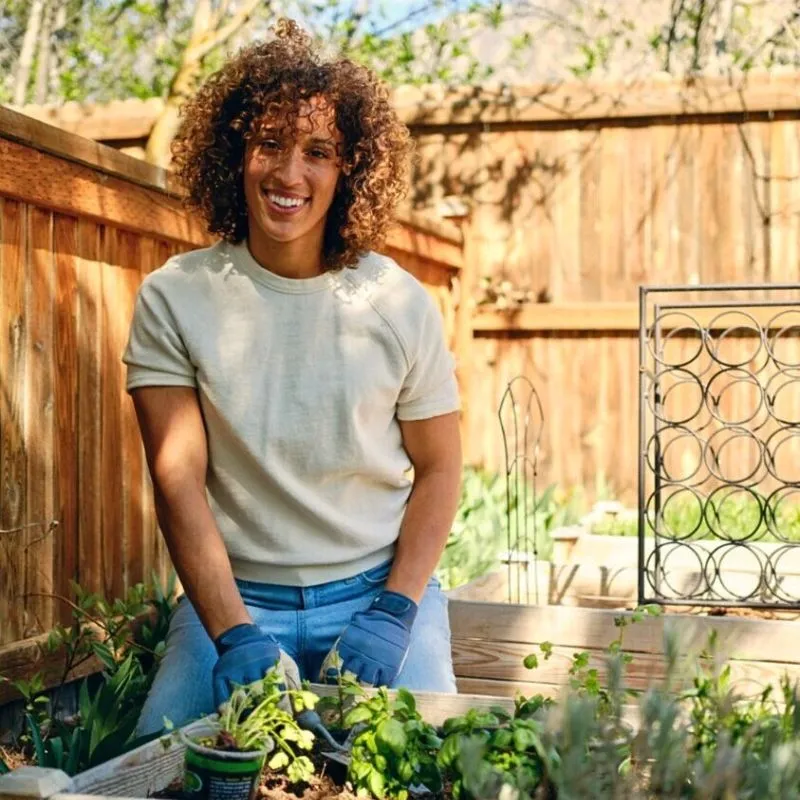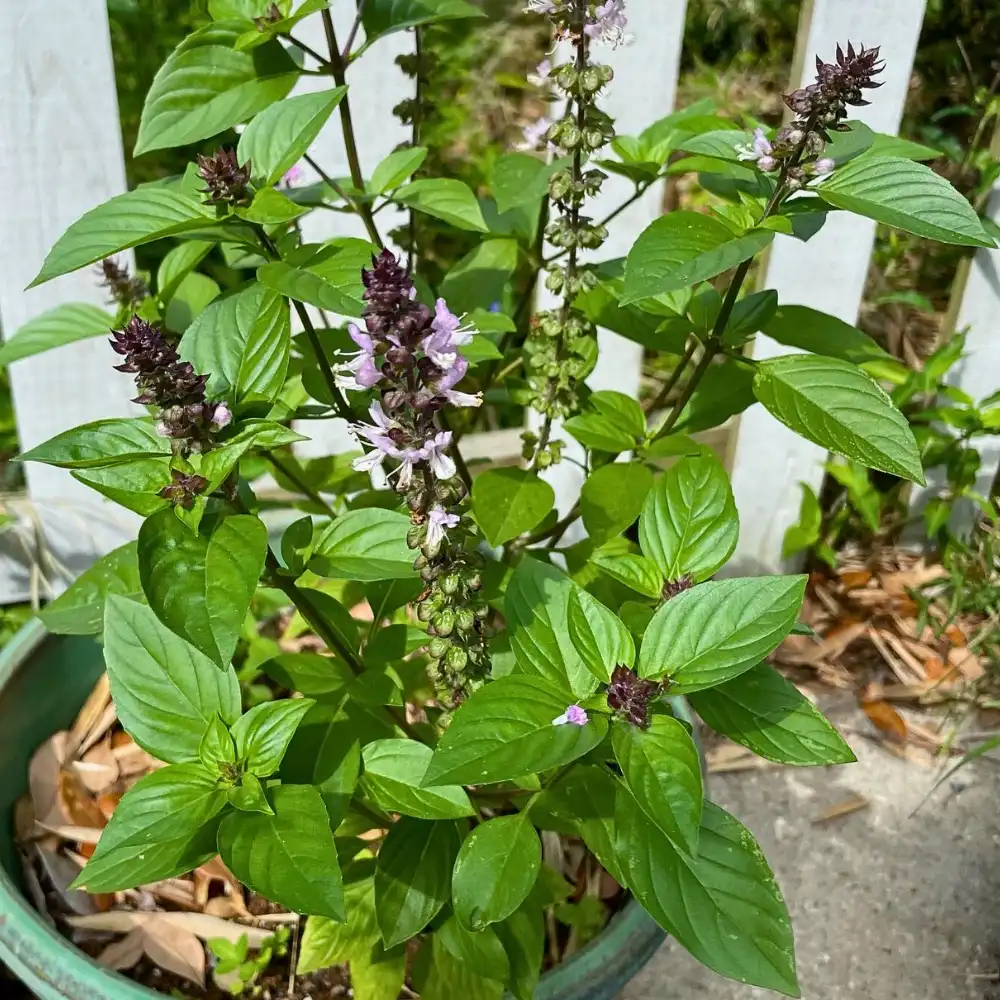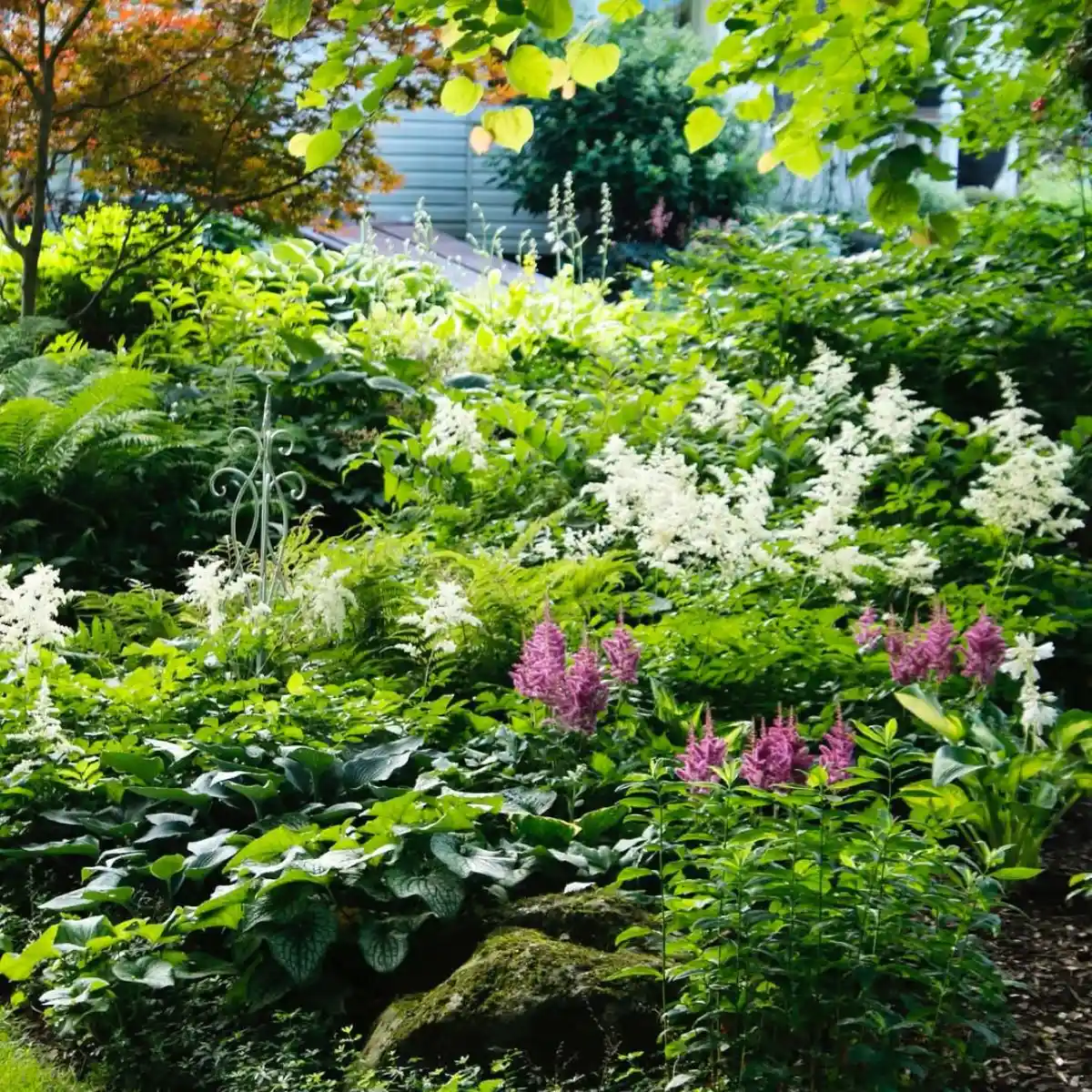Imagine a world where children’s play spaces are alive with the beauty and wonder of nature. A place where they can explore, discover, and grow amidst the lush greenery and vibrant colors of plants.
By incorporating plants into outdoor play areas, you can create a magical environment that nurtures both the physical and mental well-being of children. This post will explore how plants can transform ordinary playgrounds into extraordinary nature-based play spaces. Continue reading to learn more.

What Are The Benefits Of Nature-Based Play
It’s believed that exposure to nature has numerous benefits for children’s development. It enhances cognitive function, boosts creativity, and reduces stress levels.
When kids engage with plants and natural elements during playtime with their friends, such as when doing outdoor games and using toys with their peers, it’s said that they develop a deeper appreciation for the environment and a sense of stewardship towards living things. In addition, nature-based play encourages physical activity, as children are naturally drawn to explore and interact with their surroundings.
Moreover, playing in nature promotes social-emotional development. Kids learn to cooperate, share, and communicate as they engage in imaginative play inspired by their natural surroundings. They develop resilience and problem-solving skills as they navigate uneven terrain, climb trees, or build shelters with branches and leaves.
Designing Your Nature-Based Playground
When designing a nature-based playground, consider the following elements:
- Diverse Plant Selection: Select a variety of plants with different textures, colors, and sizes to create a visually stimulating environment. Include trees for shade, shrubs for hiding spots, and flowers for sensory exploration. Consider plants that change with the seasons, like deciduous trees that offer shade in summer and allow sunlight in winter.
- Sensory Gardens: Create dedicated areas where children can engage their bodily senses. Plant fragrant herbs like lavender and mint, include plants with interesting textures like lamb’s ear or cork bark, and add colorful flowers to attract butterflies and hummingbirds. To add, incorporate sound elements like rustling grasses or wind chimes to create an immersive sensory experience.
- Natural Play Structures: Incorporate plants into play structures such as climbing frames, tunnels, and balance beams. Utilize sturdy vines like wisteria or hardy kiwi to create living tunnels and archways. Build treehouses or platforms in mature trees for elevated play experiences like nature collectibles. Use logs, stumps, and boulders for climbing and balancing.
- Edible Landscapes: Plant fruit trees, berry bushes, and vegetable gardens to teach children about food production and healthy eating habits. Curate a sensory herb garden where kids can touch, smell, and taste different herbs. Include raised beds or containers for easy access and to protect plants from trampling.
- Water Features: Include water elements like streams, ponds, or splash pads surrounded by aquatic plants such as cattails, water lilies, or rushes. These features provide opportunities for water play and exploration. Install a hand pump or rain barrel to teach children about water conservation and the water cycle.
- Nature Art and Crafts: Incorporate areas for nature-inspired art and crafts. Provide materials like leaves, twigs, seeds, and flowers for children to create ephemeral art installations. Set up a mud kitchen where kids can make mud pies and potions using natural ingredients.
- Wildlife Habitats: Create habitats that attract local wildlife such as birds, butterflies, and beneficial insects. Install birdhouses, butterfly gardens, and bee hotels to encourage biodiversity. Teach children about the importance of pollinators and the role they play in maintaining healthy ecosystems.

Choosing The Right Plants For Your Kiddos’ Outdoor Play Space
When handpicking plants for your nature-based playground, prioritize safety and durability. Avoid plants with thorns, poisonous parts, or ones that trigger allergies. Select plants that can withstand heavy foot traffic and occasional trampling. Some great options include:
- Trees: Maple, Oak, Beech, Magnolia, Redbud, Serviceberry;
- Shrubs: Boxwood, Viburnum, Hydrangea, Butterfly Bush, Dogwood, Spirea;
- Perennials: Black-Eyed Susan, Coneflower, Yarrow, Daylily, Aster, Sedum;
- Grasses: Fountain Grass, Switchgrass, Sedges, Little Bluestem, Prairie Dropseed;
- Ground Covers: Thyme, Sedum, Creeping Jenny, Moss, Creeping Phlox, Ajuga; and so on.
In addition to these plant options, consider incorporating native species that are well-adapted to your local climate and soil conditions. Native plants support local ecosystems, attract pollinators, and require less maintenance compared to non-native varieties.
Consult with local nurseries, master gardeners, or extension offices to get recommendations for plants that thrive in your specific region. They can provide guidance on plant selection, care requirements, and potential issues to watch out for.
Maintenance And Safety Considerations
To ensure the longevity and safety of your nature-based playground, regular maintenance is crucial.
To begin, prune trees and shrubs to remove dead or broken branches. Keep pathways clear of tripping hazards like exposed roots or overgrown vegetation. Regularly inspect play structures for signs of wear and tear. Establish clear boundaries and supervise children during play to prevent accidents or injuries.
Develop a maintenance plan that includes tasks like watering, weeding, mulching, and fertilizing. Involve children in the maintenance process to teach them about plant care and responsibility. Create a garden club or organize volunteer days to engage the community in the upkeep of the playground.

The Role Of Community Involvement
Creating a successful nature-based playground goes beyond just design and maintenance. It requires the involvement and support of the entire community. Engage local residents, schools, and organizations in the planning and implementation process. Seek input from children and families to ensure that the playground meets their needs and interests.
Organize community planting days, where volunteers can help install and care for the plants. Partner with local nurseries or garden centers to source materials and expertise. Collaborate with nature centers, parks, and environmental organizations to develop educational programs and activities that complement the playground.
By involving the community, you foster a sense of ownership and pride in the nature-based playground. This engagement helps ensure the long-term sustainability and success of the project.
To Conclude
By integrating plants into outdoor play spaces, you create environments that nurture children's innate curiosity, love for nature, and joyful, meaningful play. These green oases promote physical, cognitive, and emotional development while fostering a lifelong connection to the natural world. Nature-based playgrounds offer endless opportunities for exploration, discovery, and growth.
Designing a nature-based playground involves careful consideration of plant selection, play elements, maintenance, and safety. By following best practices and engaging the community, you can transform ordinary play spaces into thriving, living landscapes that benefit children and the environment.










